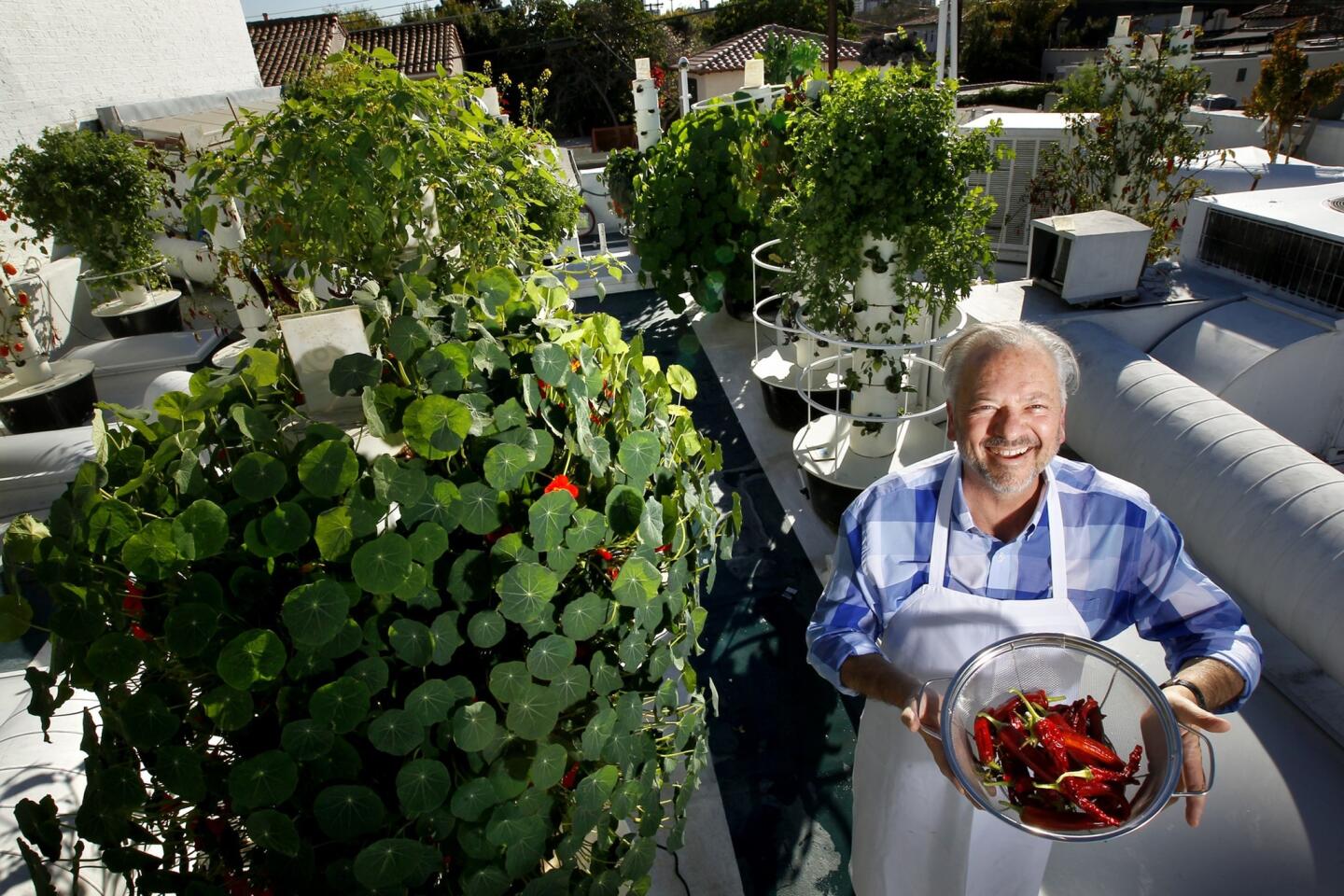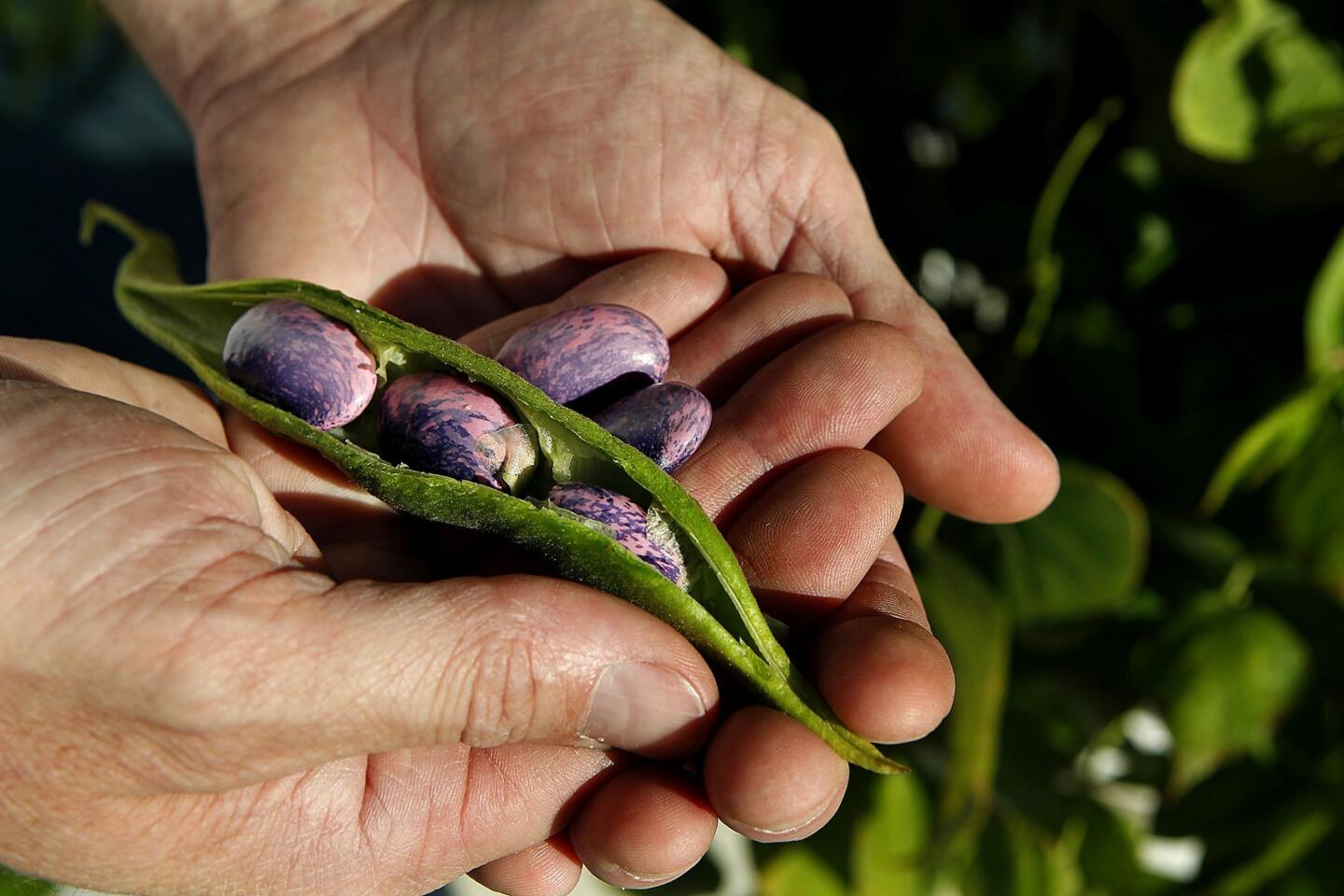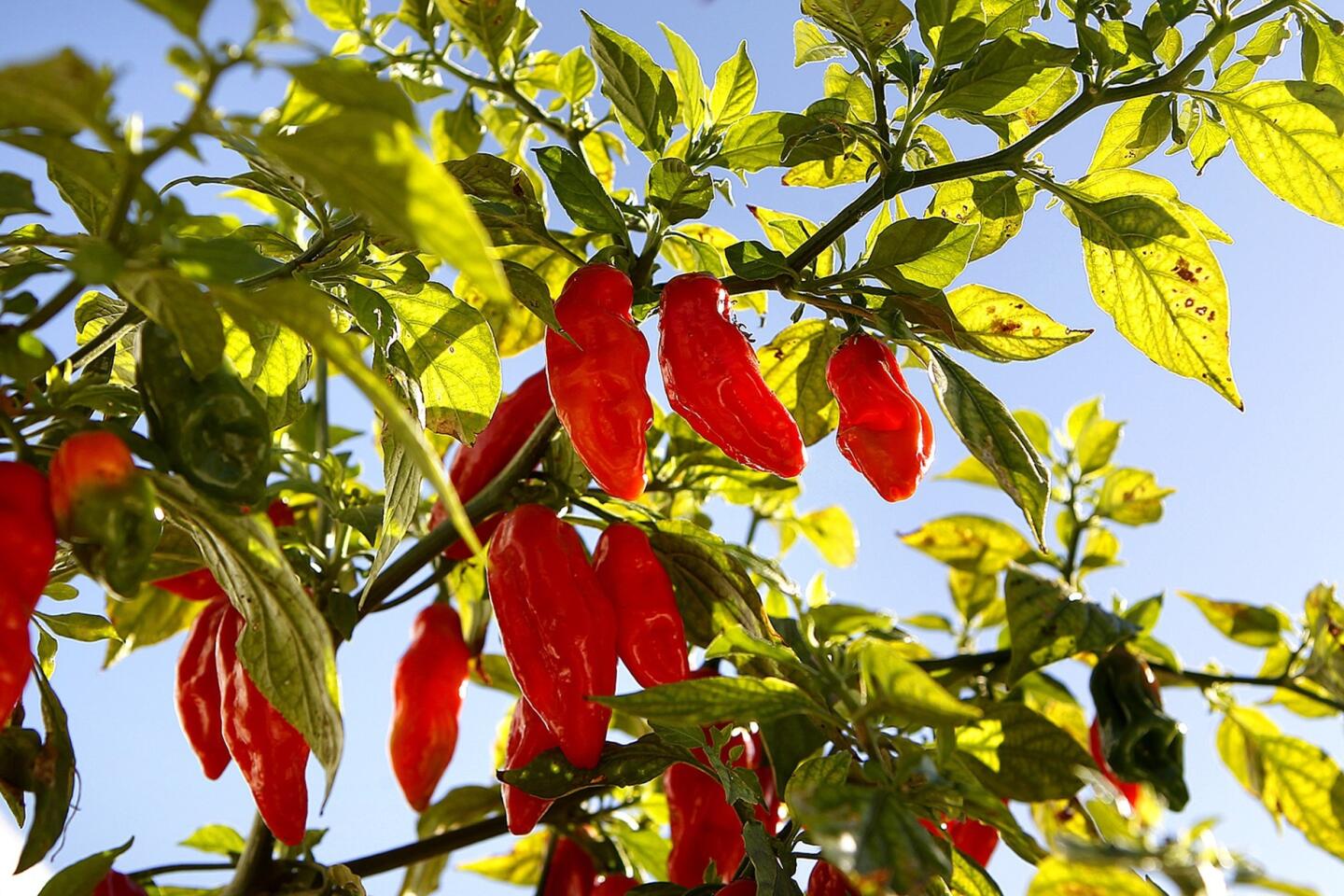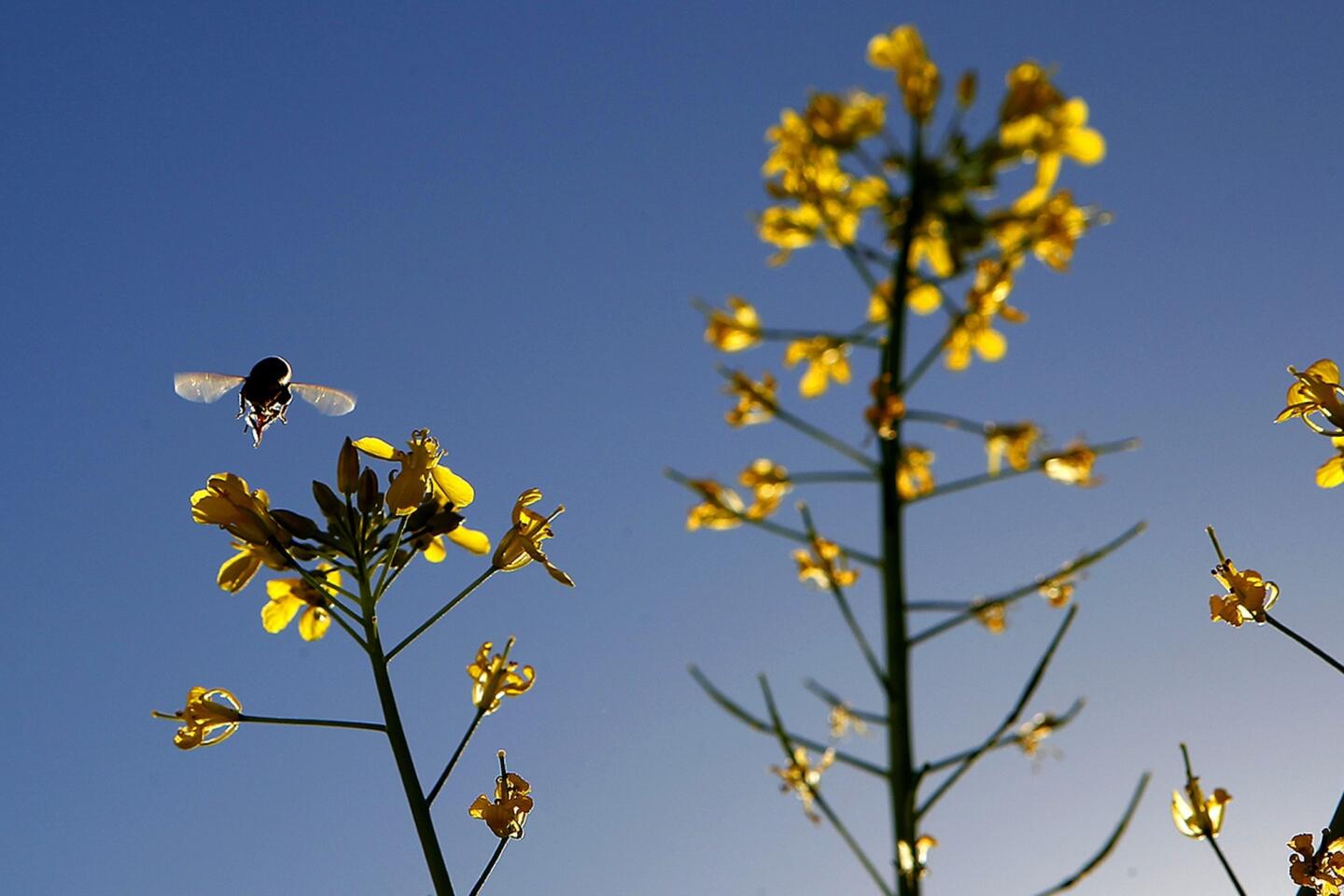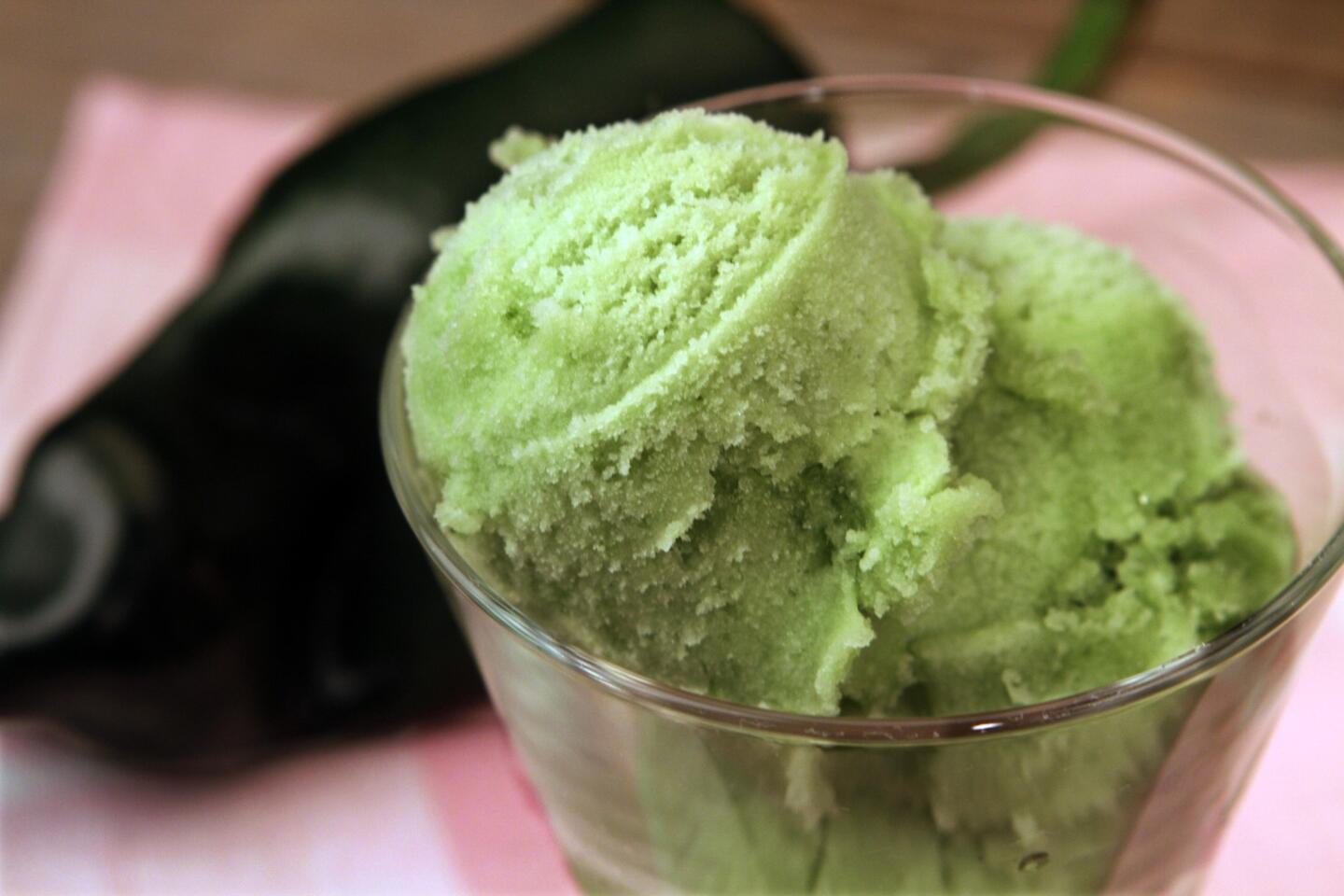Master Class: John Sedlar (Rivera) learns to grow his own
- Share via
Being a chef who grew up in Santa Fe, N.M., but cooks in Los Angeles, I have sometimes found it difficult to find ingredients I ate as a boy and still like to cook. I used to import all my own New Mexican chile pods and powders, other seasonings, blue corn tortillas, and various kinds of corn and beans, such as chicos (green corn) and Estancia pinto beans, the world’s best.
And now at Rivera, my cooking includes all the cocinas of Mexico, South America, Central America and Spain. So my need for hard-to-find ingredients has only increased.
What I’ve come to realize is that sometimes I just need to grow my own.
As a result, over the last few years I’ve experienced a crash course in the concept of terroir. That’s an oenological, agricultural and culinary term that refers to the particular influence the land or setting has on fruits, vegetables or other edible products grown on it. By extension, the word expresses the unique sense of place that you sometimes get while eating or drinking food made from a thoughtfully tended, sustainably produced ingredient.
In the process, I’ve learned two distinct growing disciplines, one ancient, one modern.
Six years ago, I leased property in Arandas, Jalisco, Mexico, a property in the highlands not far from Tequila. There I planted my own agave field and hired the area’s best agaveros to maintain the plants and the property. Drawing on my experience and visits to the area, I specifically chose a particular plot of land for its sticky red soil, rich in copper, iron and minerals from nearby volcanoes: an ideal terroir to yield the elemental flavors I especially value.
I also considered water, sun, rain, insects, spiders and rodents, each factor playing a role in the life cycle of the agave. Of course, the hardworking people themselves who tend the soil and the agave plants play a crucial part.
Nothing contributes more to understanding the layered flavors of agave-based tequila than standing there with your feet in the musty red soil, the hot sun in your face, your nostrils stimulated by the dry air and insects buzzing all around you while agaveros load agave hearts that they’ve harvested with machetes into trucks that will take them off to be roasted.
My modern experience has been dramatically different. You’ll find no volcanoes and not even any soil at Cielo Verde, the rooftop garden I created above Beverly Boulevard in midtown Los Angeles. But nevertheless, I believe terroir plays an important role in the flavors we derive from this modern farming system.
Here, the lettuces, herbs and vegetables are grown in 6-foot-tall polycarbonate towers and are nourished solely by “nutriated” water — purified water that has been packed with a trademarked nutrient solution — along with fresh breezes from the Pacific and our own particularly intense, fractured L.A. sunlight.
We had to become as knowledgeable about our conditions as the agaveros in Jalisco are. Here on a rooftop in sight of the Hollywood Hills, we know our latitude, longitude, altitude, average mean temperatures, precipitation, humidity and winds. All are factors in Cielo Verde’s own terroir. Paying attention to every detail, we also carefully select and train the crew that maintains the garden.
All these efforts have a positive impact on the fresh flavors and textures of the foods and beverages in which Cielo Verde’s harvest appear. Chiles, for example, were abundant this year. We had spectacular squashes. You wouldn’t believe the beautiful organic nasturtium flowers that we used to garnish salads and decorate our house-made tortillas florales. Our own big, heart-shaped hoja santa leaves scented all kinds of savory dishes.
If you don’t have a backyard garden yet, or even a windowsill herb garden, I suggest you hightail it to the nearest farmers market (I frequent the one on Sundays in Hollywood) to buy your own locally grown fresh herbs, lettuces, greens, vegetables and fruits for the week. The Ivar market is also a good place to pick up live edible plants, if you have some place sunny to nurture them.
It’s time to lay claim to your own terroir!
More to Read
Eat your way across L.A.
Get our weekly Tasting Notes newsletter for reviews, news and more.
You may occasionally receive promotional content from the Los Angeles Times.
